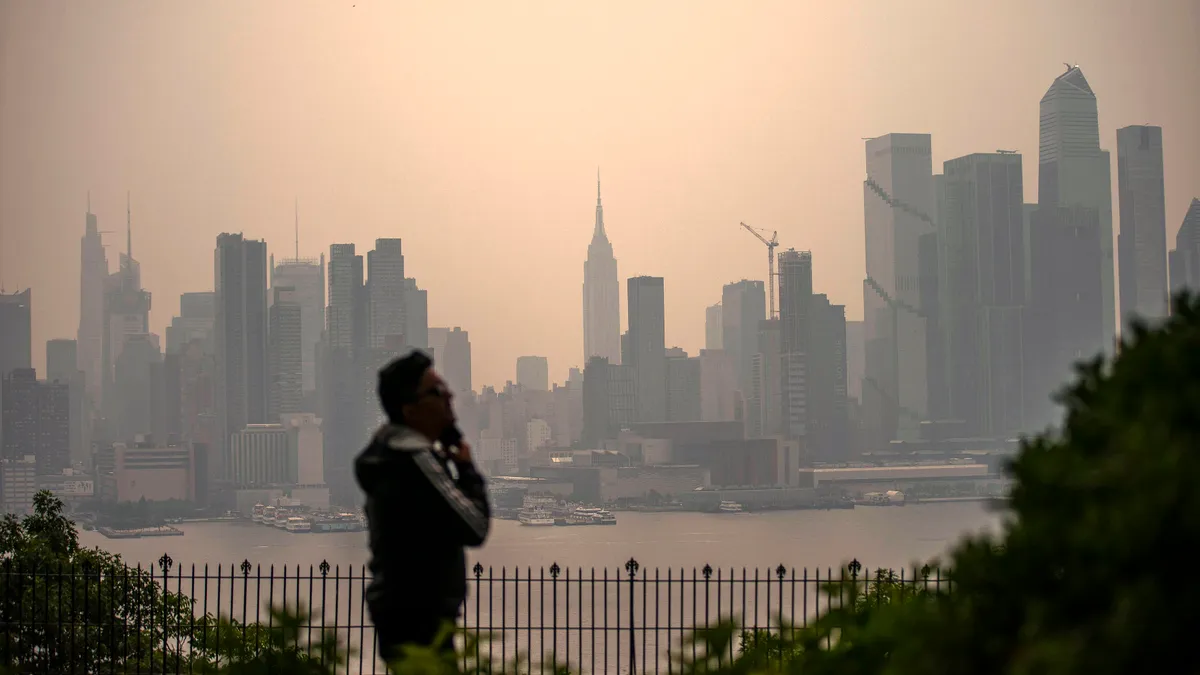As organizations observe Earth Day, climate change and its effects pose a serious threat to workers globally, according to a report published Monday by the International Labour Organization.
Extreme heat is one of the chief climate change hazards identified by ILO, with an estimated 71% of global workers likely to be exposed to excessive heat at work. The report found that nearly 23 million occupational injuries and nearly 19,000 work-related deaths are attributable to extreme heat.
In the U.S., instances of record-breaking heat have been cause for concern not only for outdoor workers, but also for workers who may be exposed to excessive indoor heat, sources previously told HR Dive. One such example occurred in 2021, when several cities in the Pacific Northwest experienced heat in the triple digits.
The effects are also felt in terms of business productivity. A separate analysis published Monday by the National Commission on Climate and Workforce Health, a group composed of business leaders and public health and safety experts, found that extreme heat resulted in a global loss of 295 billion work hours per year.
According to ILO, the range of medical conditions linked to climate change includes cancer, cardiovascular disease, respiratory illnesses, kidney dysfunction and mental health conditions. More than one billion workers are exposed to UV radiation, leading to nearly 19,000 deaths from nonmelanoma skin cancer annually, ILO said.
“It’s clear that climate change is already creating significant additional health hazards for workers,” Manal Azzi, occupational safety and health team lead at ILO, said in a press release accompanying the report. “It is essential that we heed these warnings.”
Regulators have signaled a willingness to address extreme heat in recent years in part by placing new requirements on employers. Last month, the city of Phoenix unanimously passed a heat safety ordinance. The law requires employers in certain industries to adopt standards for drinking water access, access to shade or climate-controlled environments and the implementation of high-heat procedures such as observation of workers for heat illness.
At the federal level, the Biden administration has sought several regulatory updates to address workplace heat safety, such as a federal Occupational Safety and Health Administration standard. Those efforts have not yet resulted in concrete proposals, but the administration said in 2023 that it will increase enforcement of heat safety violations and will invest in improvements to national weather forecasts and access to safe drinking water.
Air pollution also constitutes a global workforce concern with an estimated 860,000 work-related deaths attributable to air pollution occurring annually, ILO said. A series of Canadian wildfires that caused poor air quality in 2023 prompted the National Council of Occupational Safety and Health to call for improved federal standards to protect workers from the effects of smoke and other climate risks.
Only 17% of global CEOs in the National Commission on Climate and Workforce Health’s report said that they had invested in strategies to better protect employees from climate risks.
“These risks are becoming apparent to everyone from the C-suite to the shop floor, and workers need to see their employers are taking steps to ensure their safety,” David Michaels, member of the commission and former assistant labor secretary for OSHA, said in the report. “An employer’s plans to address these risks are key to maintaining a committed workforce and uninterrupted operations.”













